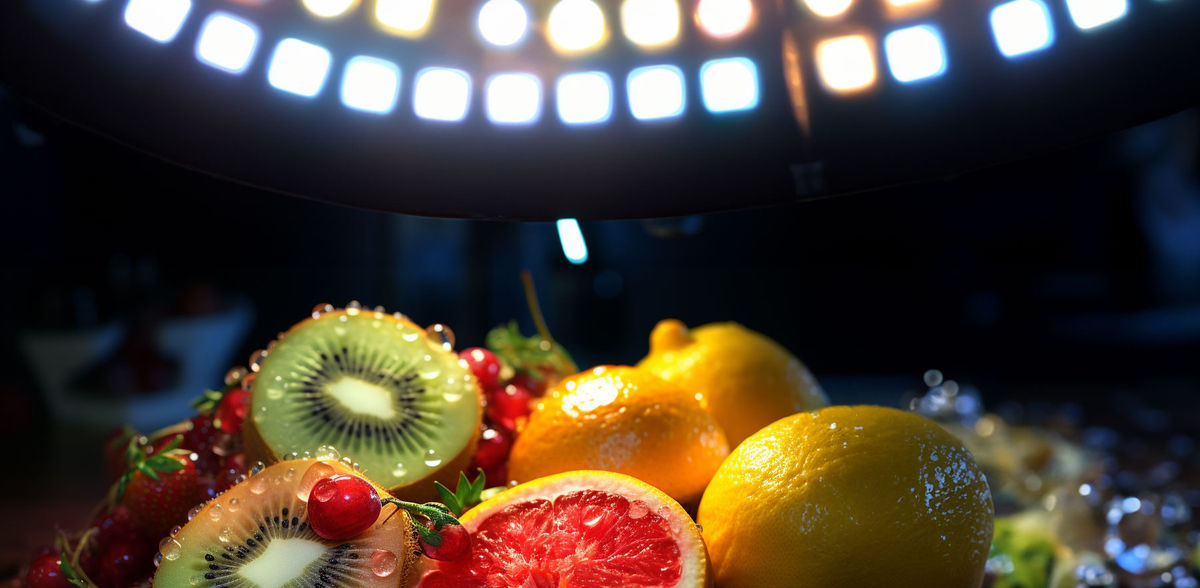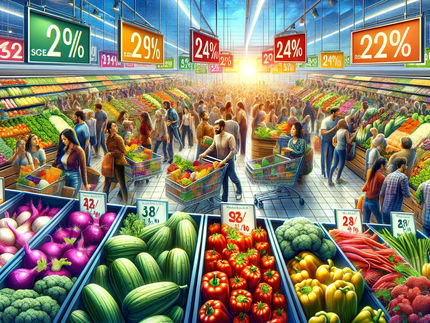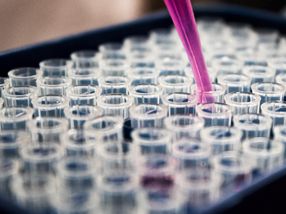LED freshness detection for fruit
Perovskite-modified LEDs indicate food spoilage
Advertisement
A research team has produced light-emitting diodes (LEDs) that emit light in two wavelength ranges simultaneously and can be used for simplified fruit freshness monitoring. As the researchers write in the journal Angewandte Chemie, modification with perovskite materials caused the LEDs to also emit in the near-infrared range, a wavelength range important in non-contact food monitoring.
Perovskites are crystals that can capture and convert light. Because of their ease of fabrication and great efficiency, perovskites are used in solar cells, as well as for other technologies, and are the subject of intense research. Angshuman Nag and his team at the Indian Institute of Science Education and Research (IISER) in Pune, India, are now introducing an application in LED technology that could simplify quality inspection of fresh fruits and vegetables.
Since untreated LEDs emit light only in a fairly narrow range, they are coated with luminescent substances for ambient light applications. These so-called phosphor-converted (pc) LEDs can cover the white sunlight range quite well. In addition, to obtain a strong band in the near-infrared region, Nag and his colleagues* developed a special double-emitting coating for pc LEDs.
This consisted of a double perovskite crystal doped with both bismuth and chromium. The researchers found that the bismuth component emitted warm white light, while the chromium atoms emitted part of the energy into a strong band in the near-infrared.
Near-infrared (NIR) light is already used by the food industry to check fruits and vegetables for freshness. "Food contains water, which absorbs the broad near-infrared emission at about 1000 nanometers," explain Nag and his graduate student Sajid Saikia, first author of the paper. "The more water [in putrefactive matter], the more NIR radiation is absorbed, and an image taken under near-infrared light shows a darker contrast. With this simple, non-contact imaging process, we can estimate the water content in different parts of the food and thus determine freshness."
When inspecting apples and strawberries, dark spots that were not visible on the normal camera image stood out under pc LEDs modified in this way. Illumination with both white and NIR light made it possible to detect both normal naked-eye coloring and hidden worse spots.
In the future, Nag and his team envision a compact device for simultaneous visual and NIR inspection of food. However, that would involve two detectors, one for visible light and one for NIR light, which could still be a challenge cost-wise for more general applications. On the other hand, the pc-LED itself would be easy to manufacture, with no loss of chemicals and solvent-free. The team is therefore confident that such dual-emitting pc-LEDs will be suitable for general applications, given sufficient qualification in longevity and scalability.
Note: This article has been translated using a computer system without human intervention. LUMITOS offers these automatic translations to present a wider range of current news. Since this article has been translated with automatic translation, it is possible that it contains errors in vocabulary, syntax or grammar. The original article in German can be found here.
































































